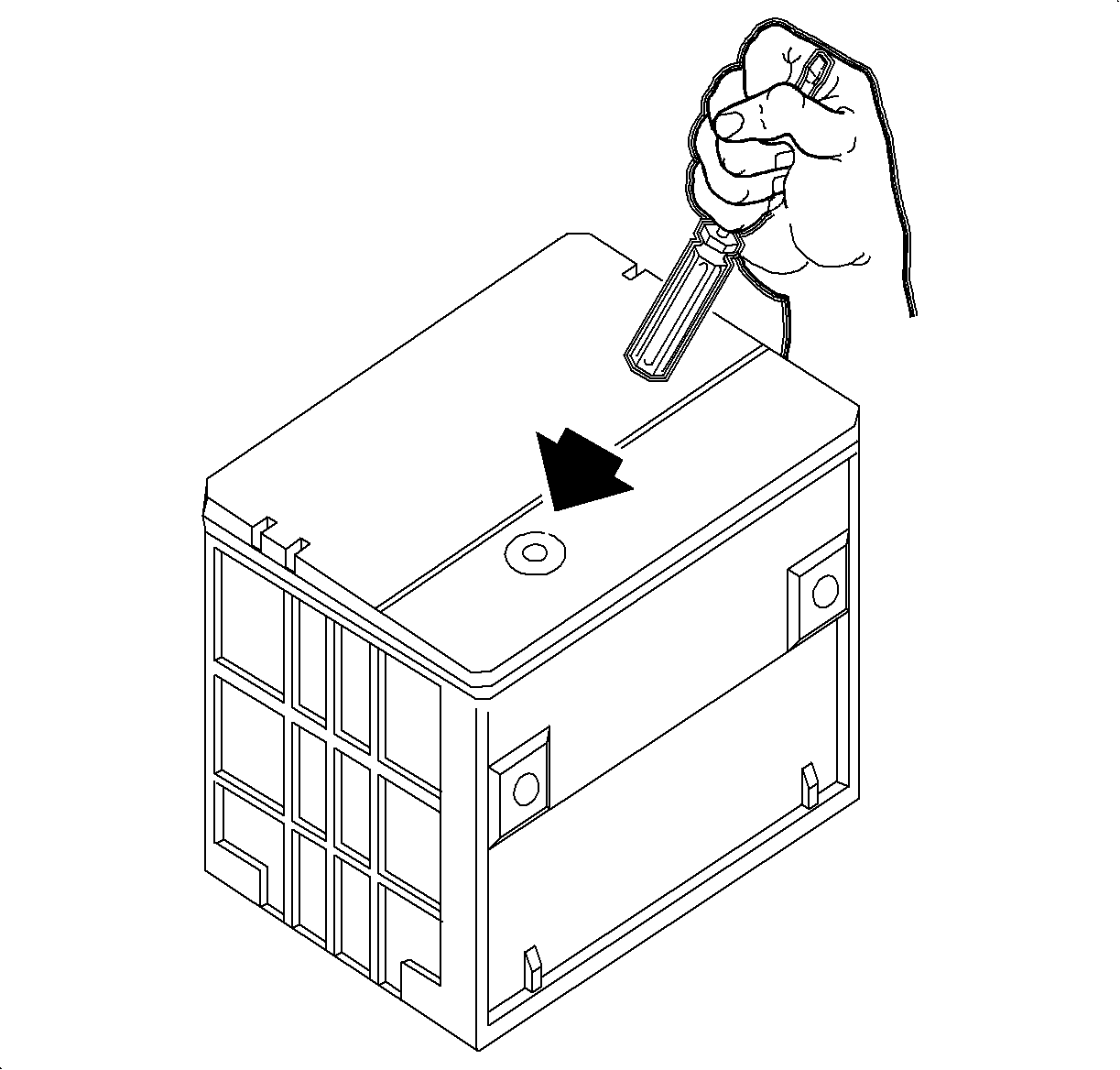Built-In Hydrometer Check

Important: Before testing battery, lightly tap eye of hydrometer to ensure that gas bubbles have not lodged themselves in hydrometer. If battery needs replacement, check charging system for proper operation.
Important: Do not charge a battery with a clear or yellow indicator.
Tap lightly on the eye and observe the built-in hydrometer.
Hydrometer Indicator | State of Charge | Required Action |
|---|---|---|
Green Dot | Above 65% | Load Test |
Dark Dot | Below 65% | Charge Battery |
Clear or Yellow Dot | Low Electrolyte | Replace Battery |
Important: Check electrical system before replacement.
Fusible Link
| • | Inspect link for damage or discoloration. |
| • | Test for battery voltage on both ends of link. |
| • | Replace with same size fusible link. The wire-gauge size is printed on insulation. |
Theft Deterrent Systems
| • | Inspect vehicle for theft deterrent system(s). |
| • | Refer to manufacturer's documentation. |
Start Circuit
| Important: Test battery first. (Refer to "Battery Performance Test" in this section.) |
| • | Inspect positive and negative battery cables. |
| • | Inspect ground circuit cables. |
| • | Inspect starter assembly connections. |
| • | Test ignition switch for proper operation. |
Charge Circuit
| • | Inspect accessory drive belt tension and condition. |
| • | Verify generator to engine block bolt torque. |
| • | Test fusible link in circuit between generator and starter. |
| • | Verify battery cable and terminal connection. |
Charge (Battery) Telltale
During engine start-up the I/P cluster performs a bulb check by illuminating the telltale for three seconds. If a code setting condition occurs, the ECM (L81) or PCM (L61) signals the I/P cluster to illuminate the charge telltale. The ECM (L81) communicates with the I/P cluster by class II on circuit 1807.
